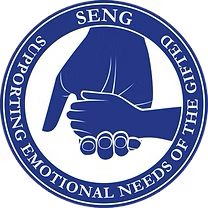The Home and Community Connections Model begins with the philosophical belief that students bring knowledge with them from their homes and community (Delgado Bernal, 2001; Gonzalez & Moll, 2005). This knowledge can be used to help students create personalized connections to the content in the classroom. A key component in the integration of the Home and Community Connections Model is the transfer of responsibility for differentiation from the teacher to the learner.
The Home and Community Connections Model is activated through a series of prompts. The prompts function like a menu of options that allow students to connect to content through a personalized lens, using the pedagogy of their home and community. The prompts that comprise the learner-centered Home and Community Connections Model are defined below in Table 1.
Table 1
Communication Structures
This prompt refers to the methods, means, and structures that families and communities use to communicate. Structures of communication can include verbal, non-verbal, and written modalities and impact the way that students send and receive messages. This prompt examines how different modes of communication vary between cultural groups and impact how a student participates in any situation or context.
Cultural Elements
This prompt encompasses the beliefs, rules, knowledge, rituals, collective identities, and memories of a family or group of people. This prompt focuses on valuing and recognizing the cultural elements that make each student unique. Students can examine the cultural elements that create the range of diversity in the classroom and world, as well as patterns of overlap between and across groups of people.
Communal Philosophy
This prompt refers to the intentional variables a family or community shares. These variables can include resources, interests, beliefs, and values. This prompt acknowledges that various communities have different philosophical orientations that impact how they interact with the world. Students can examine their own philosophical beliefs and the degree to which they are similar and/or different from others.
Historical Perspective
This prompt refers to the influence of time on history, culture, heritage, families, and people. This prompt helps to contextualize the treatment of a family, community, or group of people over time. The impact of that treatment at the individual, communal, national, and global levels must be examined.
Social Development
This prompt refers to the relationship individuals have with the world around them. The concept of multiple group memberships is critical to the examination of this prompt. Students are simultaneously members of multiple social groups: peer groups, family groups, religious groups, sports teams, etc. Each group contributes to a different piece of students’ social and developmental identity. This prompt also examines the controversies that arise when different social groups have conflicting and competing points of view.
Political Point of View
This prompt refers to the political affiliations and orientations of students and their families. This prompt recognizes that a student’s political perspective is impacted and influenced by multiple groups: their familial group, their peer group, their social media group, etc. This prompt recognizes that how we view and respond to issues is inextricably linked to our individual and familial political points of view.
Artistic Contributions
This prompt refers to the scope and influence of the artistic works and contributions of families and communities. Art can take any medium, form, or function. This prompt examines the seminal and contemporary relationship between art and culture. This prompt also highlights how art both reflects and projects people and their ideas. It is important to note that this prompt is interested in examining the art created by all people within a community, not just as pieces hanging in museums.
Collective Action
This prompt refers to the actions taken by a family member or community in service of an intended outcome or objective. These actions can be in response to both internal and external stimuli. For example, a family or community can take collective action to help an ill member or to rally around an issue of social injustice experienced by many. This prompt examines both the action that was taken as well as the motives or reasons for that action.
Traditions Over Time
This prompt focuses on the customs and beliefs passed down over generations between family members and community groups. This prompt examines not only the customs of families but the symbolic or special meanings of those customs. The relationship between seminal and contemporary family traditions is inherent in this prompt.
Linguistic Contributions
This prompt focuses on the vernacular, syntax, words, and phrases used by students and their families. This prompt values the language, dialect, and expressions indicative of a specific family or community. Language also refers to the relationship between the home language of the family or community and its uses in various contexts.
Thinking Process
This prompt refers to the strategies that individuals and families use to solve problems. The integration and juxtaposition of new knowledge with previously learned understandings is a major focus of this prompt. This prompt examines the conditions under which students and their families synthesize and apply knowledge and skills in various contexts and situations. This prompt highlights the idea that different cultures and families solve problems in various ways.
(Nyberg & Manzone, 2022; 2022)
The process for applying the prompts in your classroom is unique to you and your learners. Consider starting with a series of questions that value, acknowledge, and integrate students’ funds of knowledge in learning experiences:
- How do these prompts connect with aspects of my family and community?
- How do these prompts help me access the content in ways that are meaningful to me?
- How do these prompts help me share things about myself, my family, and my community and learn about others?
When we “see” our students as people and integrate their homes and community into the classroom, we begin to establish the trust necessary to engage in meaningful learning. The Home and Community Connections Model equips teachers with the tools necessary to value, acknowledge, and integrate students and their homes and community into the classroom.
________________________________________________________
References
Delgado Bernal, D. (2001). Learning and living pedagogies of the home: The mestiza consciousness of Chicana students. International Journal of Qualitative Studies in Education, 14(5), 623-639.
Delgado Bernal, D. (2002) Critical race theory, LatCrit theory and critical raced-gendered epistemologies: recognizing Students of Color as holders and creators of knowledge, Qualitative Inquiry, 8(1), 105–126.
Gonzalez, N., Moll, L. C., & Amanti, C. (Eds.). (2005). Funds of knowledge. Routledge Member of the Taylor and Francis Group.
Nyberg, J., & Manzone, J. (2022). The home and community connections model: Shifting the power from teacher differentiation to learner personalization. In R. Williams (Eds.). Handbook of Research on Challenging Deficit Thinking for Exceptional Education Improvement. (pp. 436-455). IGU Global Publishing. Hershey, PA. DOI: 10.4018/978-1-7998-8860-4
Nyberg, J., & Manzone, J. (2022). The home and community connections model: A strategy for creating inclusive classrooms. In J. Bell (Eds.). New considerations and best practice for training special education teachers. (pp. 43-67). IGI Global Publishing, Hershey, PA. DOI: 10.4018/978-1-7998-9494-0

